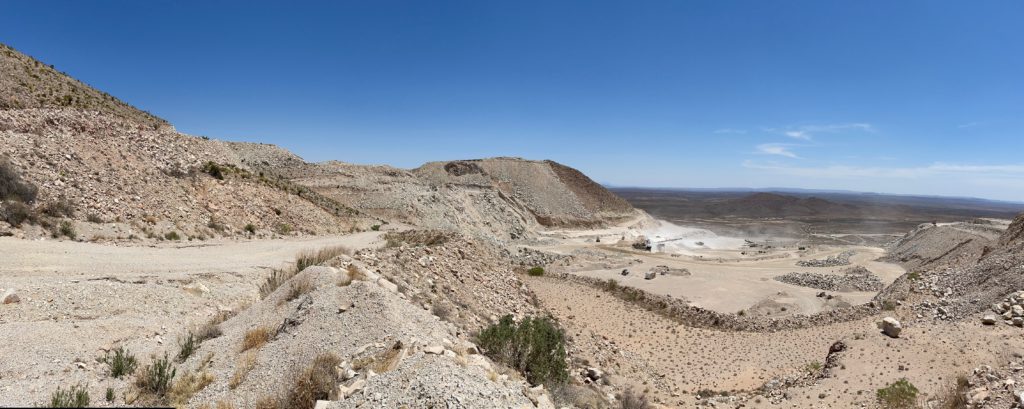
Link to Article: https://www.canadianminingjournal.com/featured-article/five-things-that-will-define-success-in-rare-earth-elements/
This year (2025) is shaping up to be “THE” year for rare earth elements (REEs) in Western markets. Recent international discussions underscore their global significance — from the U.S. eyeing Greenland for its REEs potential to diplomatic negotiations tying REEs access to geopolitical stability in Ukraine. Actions taken by President Trump and continued bipartisan strategic efforts emphasize REEs’ increasing importance for national security, technological progress, and economic strength.
My journey into REEs predates these recent headlines, originating in a fifth-grade classroom many years ago. That school science project, which involved separating a mixture of iron, salt, and water, ignited a lifelong curiosity. After I completed the experiment, my teacher challenged me further by asking, “What if these materials were critical for life-saving medical technology, space missions, or advanced innovations shaping our world?”
That single, thought-provoking question sparked a lasting interest in critical minerals and set me on a path toward the mining industry.
Today, with nearly two decades of global experience in mining and mineral development, I lead strategic initiatives at Tactical Resources Corp., a mineral exploration and development company focused on U.S.-made REEs used in semiconductors, electric vehicles, advanced robotics, and most importantly, national defense. Based on my personal and professional experiences, I would like to share five critical factors that can help define success for anyone navigating the complexities and opportunities of the REEs sector.
Understanding China’s substantial head start
First, we need to address the elephant in the room. China has a substantial lead in the REEs sector, and western stakeholders must acknowledge it. China currently controls roughly 90% of global REEs production, despite accounting for only about one-third of global deposits.
This dominance is not coincidental. It is a strategic outcome of China’s aggressive long-term planning, investments in mining and refining infrastructure, and state-supported economic incentives.
Rare earth elements are so important because each of the 17 REEs exhibits unique electromagnetic properties that make them indispensable for numerous modern technologies — smartphones, electric vehicles (EVs), artificial intelligence (AI), humanoid robotics, advanced defense systems, and more. Consequently, Chinese-controlled supply chains and dominance in this sector creates potential vulnerabilities for Western supply chains and interests, including national defense interests and geopolitical leverage.
Nonetheless, there is hope, and more importantly, there is progress. Increasingly, new Western companies, like Tactical Resources, are dedicating resources to close this gap, shifting from dependence on external sources to domestic and allied supply chains. Developing this effort demands sustained attention, strategic government-industry collaboration, and substantial investment in infrastructure and innovation.
Leveraging North America’s untapped REEs’ potential
Contrary to common perceptions, North America is richly endowed with REEs resources, many of which remain largely unexplored or undeveloped.
Historically, Western stakeholders mistakenly assumed a need to look internationally — whether to China, Greenland, Ukraine, or parts of Africa — for viable REEs deposits. However, abundant, high-quality assets exist within our own borders.
When Tactical Resources began evaluating potential projects, we explicitly focused on North American deposits. The Sierra Blanca geological formation in the Southwestern U.S., for example, represents just one of several domestic sites with significant potential for REEs extraction. These domestic assets not only provide strategic advantages but also support greater geopolitical stability, economic sustainability, and reduced dependence on China and foreign countries. Expanding the exploration and development of these resources could decisively alter the dynamics of the global REEs market in favour of Western economies.
Accelerating domestic processing and refining capabilities
The most immediate challenge for REEs production outside of China is limited processing and refining capacity. Ironically, REEs are not inherently scarce; their mining is achievable in many locations worldwide.
However, processing and refining them into usable, high-purity products — materials that can be used for those smartphones, EVs, defense systems, and more — has historically been complex, energy-intensive, and environmentally challenging. This refining bottleneck enabled China to dominate the global supply chain by effectively positioning itself as the world’s primary processor and refiner of REEs.
The West, however, is now beginning to overcome these hurdles. Encouraged by strategic incentives and early government-industry partnerships, significant investment in refining infrastructure is underway across North America.
Facilities currently under construction or planned for development promise to create the foundation for a fully integrated domestic REEs supply chain. Recent governmental actions in the U.S., backed by bipartisan consensus, indicate a clear strategic priority to ensure national security and technological leadership through enhanced refining and production capacity.
Continued collaboration between industry stakeholders and policymakers is critical to achieving these ambitious — but necessary — objectives.
Prioritizing geological and mineralogical understanding
The core of successful REEs development is firmly understanding geology and mineralogy. Identifying deposits with substantial, credible resource estimates is critical, but equally important is the detailed geological and mineralogical analysis of each deposit’s specific composition. Different REEs have varying market values, extraction difficulties, and industrial applications, which make expert, accurate geological insight essential.
Moreover, considerations extend beyond the deposit itself. Mining companies and developers must assess infrastructure, accessibility and proximity to major transportation hubs, and logistics networks. Evaluating whether greenfield sites, which require substantial upfront investment, or brownfield sites, which can leverage existing infrastructure for quicker project turnaround, offer greater strategic value is a significant decision factor.
Tactical Resources, for example, strategically selected the Sierra Blanca quarry near El Paso, Texas, recognizing its geological and mineralogical strengths, existing infrastructure, and advantageous location that together aim to enable cost-effective production and streamlined distribution capabilities.
Committing to sustainable and environmentally responsible practices
The REEs sector has made quite a bit of progress, but one area that still needs improvement is minimizing the environmental footprint of operations. There is no secret why China dominates this space — the processing and refining of REEs makes it a fundamentally dirty business.
Addressing these environmental concerns requires innovative solutions grounded in geology itself. Some deposits naturally simplify the extraction and refining process, dramatically reducing the environmental footprint. In these instances, nature has effectively performed preliminary processing refining, enabling simpler, cleaner extraction methods.
Most traditional operations go through a series of very exhausting, energy intensive, and heavy steps to produce a concentrated product. This concentrate product then needs to be cracked, leached, baked, and roasted to really unlock and liberate the REEs within. This process has traditionally been a roadblock for refining capacity of REEs in the U.S.
Companies with the right “direct to leach” style assets may only be required to introduce the extraction solution to be able to dissolve the REEs in one single step, which will give them a significant environmental and cost advantage. I believe these are the companies and assets that stakeholders in this market should keep an eye on.
Looking forward: The potential for REEs is still in its infancy
The REEs market is at an unprecedented inflection point, poised for significant transformation in the coming years. China’s established dominance, North America’s geological abundance and emerging refining capacity, alongside growing sustainability commitments, collectively represent opportunities and challenges that require informed, strategic navigation.
My journey into REEs — sparked by youthful curiosity in a classroom and shaped by decades of industry experience — has provided me with unique perspectives on the complexities and potential of this fascinating sector. As we navigate these critical times, my ambition is to share my insights, inspire collaborative industry advancement, and contribute meaningfully to the broader understanding of REEs as foundational pillars of our technological future.
Much like the educator who profoundly influenced me, I aim to help others in our industry recognize and leverage these exciting opportunities, turning strategic insight into practical action to help take this market to the next level. I hope I can serve as a good teacher for others in this space, as they evaluate strong companies and assets and plan for future partnerships and investments. 
Kuljit (Jeet) Basi is the president and executive chairman of Tactical Resources Corp., a mineral exploration and development company focused on U.S.-made REEs used in semiconductors, EVs, advanced robotics, and most importantly, national defense.
Link to Article: https://www.canadianminingjournal.com/featured-article/five-things-that-will-define-success-in-rare-earth-elements/
